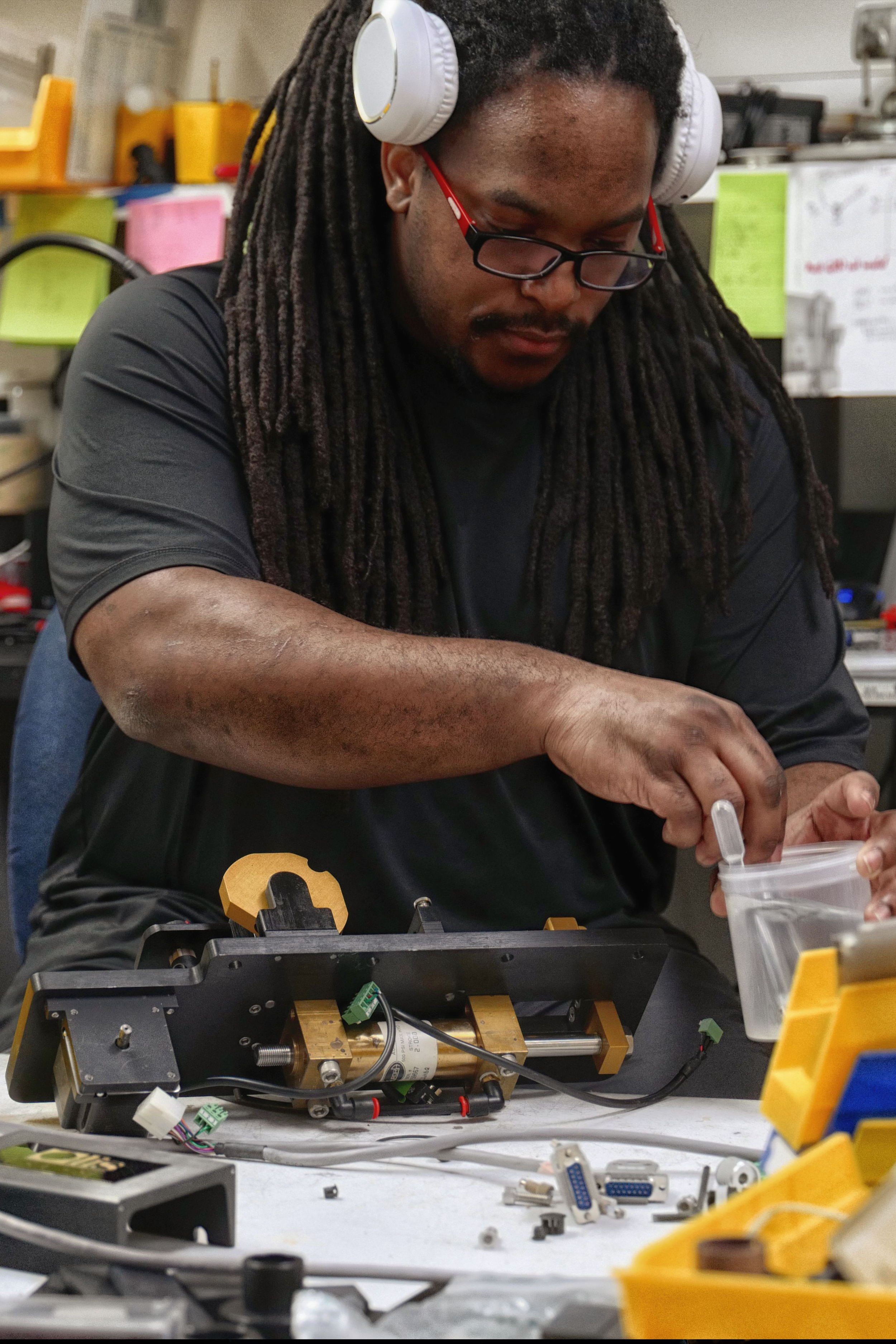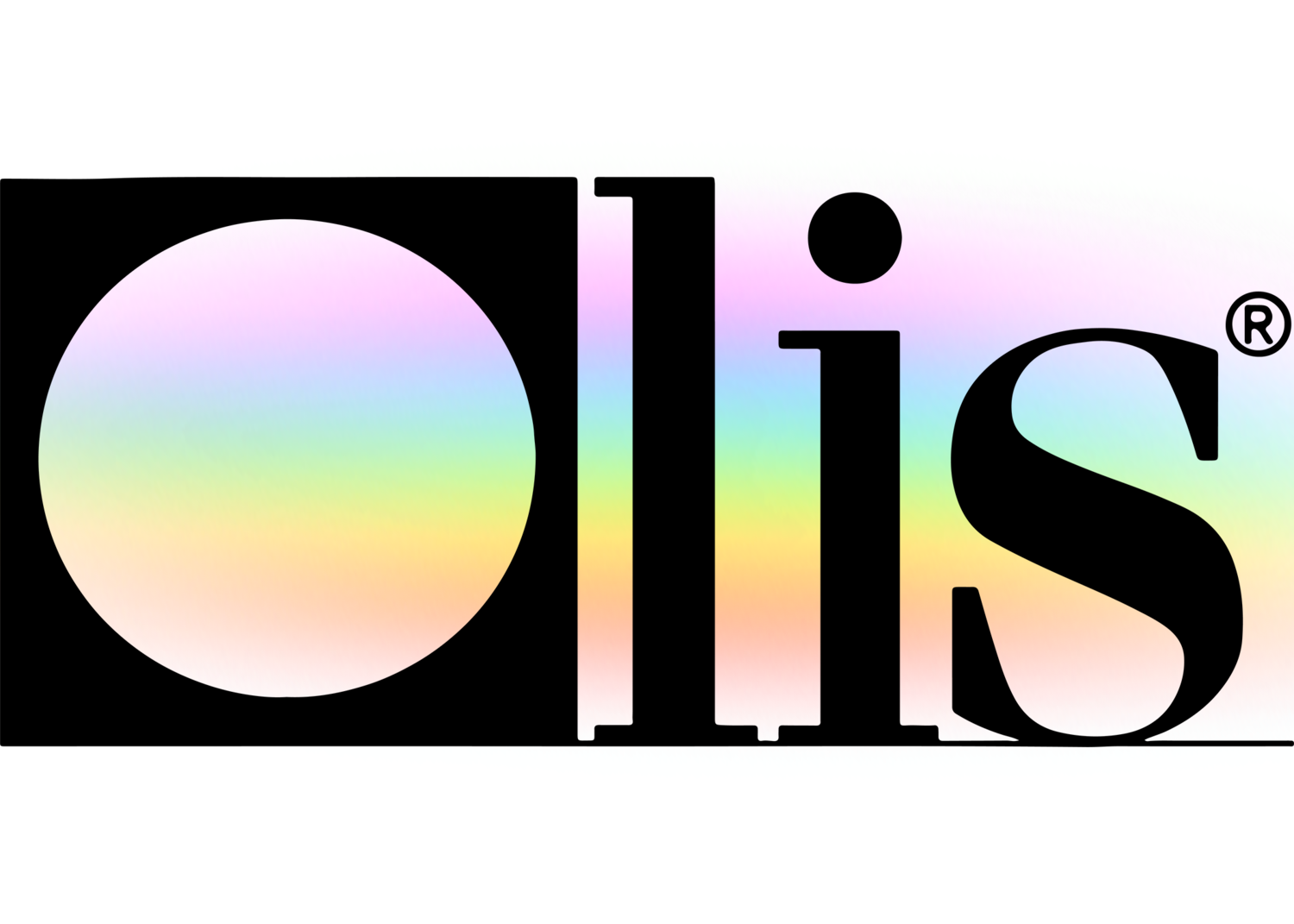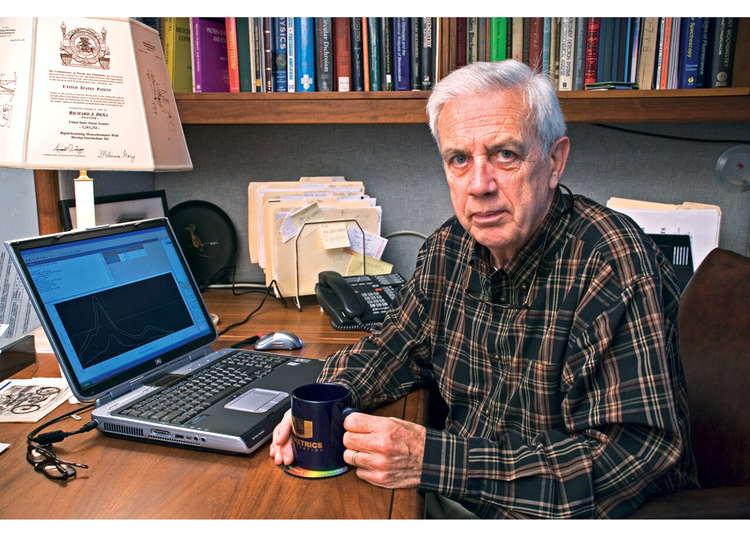Facts About Circularly Polarized Luminescence Uncovered
Facts About Circularly Polarized Luminescence Uncovered
Blog Article
The Ultimate Guide To Spectrophotometers
Table of ContentsMore About Uv/visNot known Details About Uv/vis The Basic Principles Of Uv/vis 4 Easy Facts About Circular Dichroism DescribedThe Best Guide To Uv/vis/nir

Spectrophotometry is most commonly applied to ultraviolet, noticeable, and infrared radiation, modern spectrophotometers can question large swaths of the electro-magnetic spectrum, consisting of x-ray, ultraviolet, visible, infrared, and/or microwave wavelengths. Spectrophotometry is a tool that hinges on the quantitative analysis of molecules depending on how much light is soaked up by colored substances.
Uv/vis Fundamentals Explained
A spectrophotometer is commonly used for the measurement of transmittance or reflectance of services, transparent or nontransparent solids, such as polished glass, or gases. Although many biochemicals are colored, as in, they take in noticeable light and therefore can be determined by colorimetric procedures, even colorless biochemicals can typically be converted to colored compounds ideal for chromogenic color-forming reactions to yield compounds ideal for colorimetric analysis.: 65 However, they can also be developed to measure the diffusivity on any of the listed light ranges that generally cover around 2002500 nm using different controls and calibrations.
An example of an experiment in which spectrophotometry is utilized is the determination of the balance constant of a service. A particular chemical reaction within a solution might occur in a forward and reverse instructions, where reactants form products and products break down into reactants. At some time, this chain reaction will reach a point of balance called an equilibrium point.
The Greatest Guide To Spectrophotometers
The quantity of light that travels through the option is a sign of the concentration of specific chemicals that do not allow light to pass through. The absorption of light is due to the interaction of light with the electronic and vibrational modes of molecules. Each type of molecule has an individual set of energy levels related to the makeup of its chemical bonds and nuclei and thus will soak up light of particular wavelengths, or energies, leading to unique spectral homes.
They are extensively used in numerous markets consisting of semiconductors, laser and optical manufacturing, printing and forensic assessment, as well as in labs for the research study of chemical substances. Spectrophotometry is frequently used in measurements of enzyme activities, determinations of protein concentrations, decisions of enzymatic kinetic constants, and measurements of ligand binding reactions.: 65 Eventually, a spectrophotometer is able to determine, depending on the control or calibration, what substances are present in a target and exactly how much through estimations of observed wavelengths.
Created by Arnold O. Beckman in 1940 [], the spectrophotometer was created with the help of his coworkers at his company National Technical Laboratories established in 1935 which would become Beckman Instrument Company and eventually Beckman Coulter. This would come as a solution to the formerly developed spectrophotometers which were unable to soak up the ultraviolet correctly.
What Does Spectrophotometers Mean?
It would be found that this did not offer acceptable results, for that reason in Design B, there was a shift from a glass to a quartz prism which enabled much better absorbance results - circularly polarized luminescence (https://www.bark.com/en/us/company/olis-clarity/96z8l/). From there, Design C was born with a change to the wavelength resolution which ended up having 3 units of it produced
It was produced from 1941 to 1976 where the rate for it in 1941 was US$723 (far-UV accessories were an option at extra expense). In the words of Nobel chemistry laureate Bruce Merrifield, it was "most likely the most crucial instrument ever developed towards the development of bioscience." Once it became discontinued in 1976, Hewlett-Packard created the first commercially readily available diode-array spectrophotometer in 1979 called the HP 8450A. It irradiates the sample with polychromatic light which the sample absorbs depending on its residential or commercial properties. It is transferred back by grating the photodiode selection which identifies the wavelength region of the spectrum. Ever since, the development and implementation of spectrophotometry devices has actually increased profoundly and has actually turned into one of the most innovative instruments of our time.

About Circular Dichroism
The grating can either be movable or repaired.
In such systems, the grating is fixed and the intensity of each wavelength of light is determined by a various detector in the variety. When making transmission measurements, the spectrophotometer quantitatively compares the portion of light that passes through a reference option and a test solution, then digitally compares the strengths of the two signals and computes the portion of transmission of the sample compared to the reference standard.

Report this page